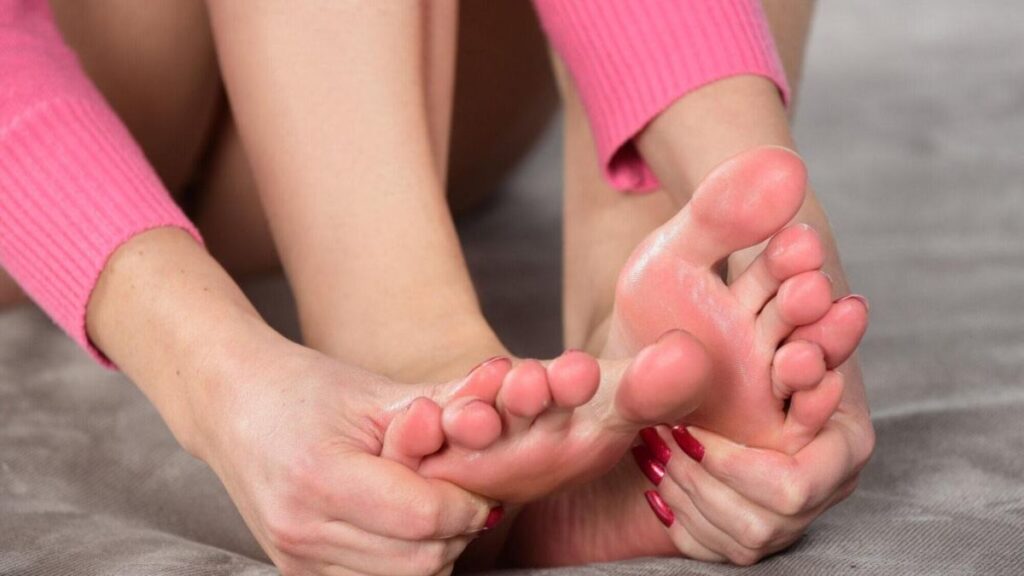Have you ever put on a pair of socks and felt uncomfortable all day? The type of socks you wear can make a huge difference in your foot health.
The wrong socks can lead to blisters, bad odor, and even infections. On the other hand, the right socks provide comfort, prevent foot problems, and improve overall well-being.
This guide will help you understand how socks affect foot health and how to make the best choice for happy feet. Read on!
The Importance of Breathable Fabrics
Socks made from breathable fabrics keep your feet dry and comfortable. Materials like cotton, wool, and bamboo allow air to circulate and prevent sweat buildup.
Excess moisture can lead to bacterial and fungal infections, causing foot odor and discomfort. Breathable socks wick away moisture and help maintain foot hygiene.
Synthetic fabrics like polyester and nylon trap moisture, increasing the risk of blisters and infections. Choosing socks made from natural, breathable fibers can keep your feet fresh and dry all day.
Pay attention to the fabric blend when shopping for socks. Your feet will thank you!
Cushioning and Support for All-Day Comfort
Socks with proper cushioning provide extra support and protection. Cushioned socks help absorb impact, making them ideal for people who stand or walk a lot.
Thick, padded socks reduce pressure on your feet and prevent soreness. Arch support socks help distribute weight evenly and reduce strain.
Thin socks may not provide enough padding, leading to foot fatigue. Whether you are an athlete or have a busy lifestyle, cushioning enhances foot comfort.
Socks designed with added padding in high-impact areas prevent injuries. Look for cushioned socks for better foot support and overall well-being.
Preventing Blisters with the Right Fit
Ill-fitting socks can cause painful blisters on your feet. When socks are too tight, they create friction and pressure points.
Loose socks bunch up, rubbing against your skin and causing irritation. Properly fitted socks hug your feet without being too tight.
Seamless socks reduce friction and help prevent blisters. Look for socks with reinforced heels and toes for extra protection.
Avoid cotton socks for intense activities, as they retain moisture and increase friction. The right fit keeps your feet comfortable and free from blisters. Always choose socks that fit well to keep your feet happy.
Choosing the Right Socks for Different Activities
Different activities require different types of socks. Running socks should be moisture-wicking and cushioned for shock absorption.
Hiking socks should be thick and warm for protection against rough terrain. Office socks should be breathable and comfortable for all-day wear.
Athletic socks often have compression features to improve circulation and reduce swelling. Everyday socks should be lightweight and soft for casual use.
Selecting the right socks for each activity enhances foot comfort and prevents problems. Pay attention to the specific needs of your feet. Wearing the right socks for the right occasion makes a big difference.
The Role of Sock Height in Foot Health
The height of your socks affects your comfort and protection. No-show socks are great for casual wear but may not provide enough coverage.
Ankle socks are ideal for running and sports but can slip off easily. Crew socks offer more protection and warmth, making them great for everyday use.
Knee-high socks provide extra support and are useful for certain medical conditions. Compression socks help improve circulation and reduce swelling, making them beneficial for long hours on your feet.
The right sock height depends on your lifestyle and needs. Choose wisely for the best foot health benefits.
The Dangers of Synthetic Materials
Synthetic socks may be affordable, but they are not always the best choice for foot health. Many synthetic materials trap moisture, increasing the risk of odor and infections.
Poor-quality fabrics do not allow proper air circulation, leading to sweaty feet. Some synthetic socks cause skin irritation and allergic reactions.
Natural materials like cotton and bamboo are gentler on the skin. If you must wear synthetic socks, look for moisture-wicking technology.
Blended fabrics with natural fibers offer a good balance. Avoid low-quality synthetic socks to keep your feet fresh and healthy. Your feet deserve the best materials.
How to Care for Your Socks Properly
Taking care of your socks extends their lifespan and keeps your feet healthy. Wash your socks regularly to prevent bacteria buildup and odor.
Use mild detergent to avoid irritating your skin. Air-dry socks instead of using a dryer to maintain fabric quality.
Store socks in a clean, dry place to prevent mildew. Avoid wearing the same pair multiple days in a row. Replace worn-out socks to prevent discomfort and foot problems.
Keeping your socks in good condition ensures better foot hygiene. Proper sock care leads to happy, healthy feet every day.
Why Diabetic Socks Are Different
People with diabetes need special socks to protect their feet. Diabetic socks are designed to reduce pressure and prevent injuries. They are made from soft, non-irritating materials to prevent skin damage.
These socks often have seamless construction to avoid friction. Moisture-wicking properties keep feet dry and reduce infection risk.
Proper circulation is essential for diabetic foot health, and special socks help with this. Some diabetic socks have extra padding for better comfort.
Wearing the right socks can prevent serious foot complications. If you have diabetes, invest in high-quality socks designed for your needs.
How Sock Choice Affects Foot Odor
The Sock and Foot Health can help prevent foot odor and keep your feet fresh. Breathable fabrics allow air to circulate and reduce sweat buildup.
Moisture-wicking socks pull sweat away from your skin, preventing bacteria growth. Antibacterial socks with silver or copper fibers kill odor-causing bacteria.
Wearing clean socks daily reduces the risk of bad odors. Avoid wearing damp or sweaty socks for long periods.
Choosing high-quality materials prevents moisture-related foot problems. Fresh-smelling feet start with the right sock choice. Keep your feet dry and odor-free with well-ventilated, moisture-wicking socks.
How Choosing the Right Socks Affects Foot Health
Your Sock and Foot Health play a crucial role in keeping your feet healthy and comfortable. The right socks prevent blisters, reduce foot odor, and provide much-needed support. Whether for sports, work, or daily wear, selecting the right socks enhances foot health.
Taking care of your socks ensures they last longer and keep your feet fresh. By making smart sock choices, you protect your feet from discomfort and infections.
Did you like this guide? Great! Browse our website for more!







